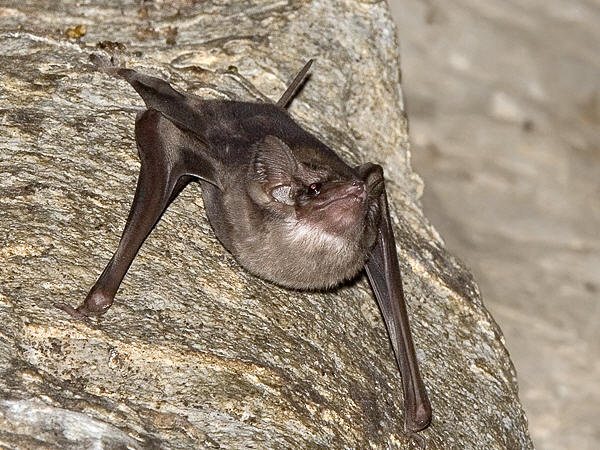 |
Order : CHIROPTERA
Family : Emballonuridae
Species : Taphozous longimanus
Forearm Length : up to
6.3 cm
Tail Length : up to 3.3 cm
(Source : Lekagul & McNeely, 1977)
Taphozous longimanus
(Long-winged Tomb Bat) is a fast-flying bat of the family Emballonuridae.
The species is particularly well documented in Thailand, where it is known
to roost in groups of 2-20 in hollow trees, caves, water wells and beneath
the eaves of houses (Lekagul & McNeely, 1977). Notably this bat appears
tolerant of brightly lit roosts, which other bats would tend to avoid.
Francis (2019) notes that this bat will also roost in the crowns of palm
trees (presumably Cocos nucifera). In Singapore the species appears
to be mainly coastal; the first record for Singapore was captured in 2016 on intertidal mudflats on Pulau Ubin, an island in the northeast of
the country (Teo, 2018). Based on sonogram recordings, it appears the species
also forages in many other parts of coastal northeast Singapore, however in
urban areas the Black-bearded Tomb Bat
Taphozous melanopogon is considerably more common (pers. obs.).
Taphozous longimanus appears to be smaller-bodied than Taphozous
melanopogon, but its maximum forearm measurements are similar, based on
measurements in Lekagul & McNeely (1977) i.e. 6.3 cm versus 6.5 cm in
the latter.
The fur of Taphozous longimanus is chocolate brown to yellowish
brown, sometimes speckled with white (in older bats?). Sexual dimorphism is
described in Lekagul & McNeely (1977); males are described as 'usually
cinnamon brown' and females as 'usually dark grey'.
The underside of the
chin is devoid of fur; males have a throat pouch, which females lack. The
wings are quite narrow and relatively long, and the tail is long and
narrow, always tapering to a sharp tip.
Included here is a video of 6 tomb bats emerging from a
treehole at the edge of Panti Forest, Johor, Peninsular Malaysia at dusk.
All 6 bats lacked a dark 'beard' (the presence of a patch of
dark fur under the chin is a diagnostic feature of male Taphozous
melanopogon). The bats in this video may therefore either be a
female-only roost of Taphozous
melanopogon or a
roost of Taphozous longimanus; the location of the roost in a
hollow tree tends to suggest the latter.
[Watch video
of 6 bats emerging from a treehole at dusk (1:07).]
Taphozous longimanus is known to occur in at least India,
Sri Lanka, Bangladesh, Myanmar, Thailand, Laos, Cambodia, Peninsular Malaysia,
Singapore, the Philippines, Sumatra, Borneo, Java, Bali, Lombok and other
islands of eastern Indonesia.
Fig 1 : Example from a cave roost in Thailand. Note the absence of fur
beneath the chin. Photo thanks to Jon Hall,
MammalWatching.com.
Fig 2 : Probable Long-winged Tomb Bat emerging at dusk from a tree cavity
at the edge of Panti Forest. Johor, Peninsular Malaysia. A
total of 6 bats were seen to emerge.
Figs 3 and 4 : Dead tree at Panti Forest, with arrow marking the entry to
the tomb bat roost.
Fig 5 : Constant frequency (CF) call recorded at Bedok Reservoir, Singapore,
from a search-phase sequence of 16 pulses, with an average peak frequency of
31.6 KHz. This is tentatively identified as Taphozous longimanus (see
Hughes et al, 2011).
References :
Francis, C. M. (2019). A Field Guide to the Mammals of South-east Asia.
Second Edition. New Holland. 416 pp.
Hughes, A. C., Satasook, C., Bates, P. J., Soisook, P., Sritongchuay, T.,
Jones, G., & Bumrungsri, S. (2011). Using echolocation calls to identify
Thai bat species: Vespertilionidae, Emballonuridae, Nycteridae and
Megadermatidae. Acta Chiropterologica, 13(2), 447-455.
Lekagul, B., McNeely, J., (1977). Mammals of Thailand. Association for the
Conservation of Wildlife, Thailand. 758 pp.
Teo, R. C. H. (2018). First record of the long-winged tomb bat in Singapore.
Singapore Biodiversity Records. 2018: 59-61. National University Of
Singapore.
|